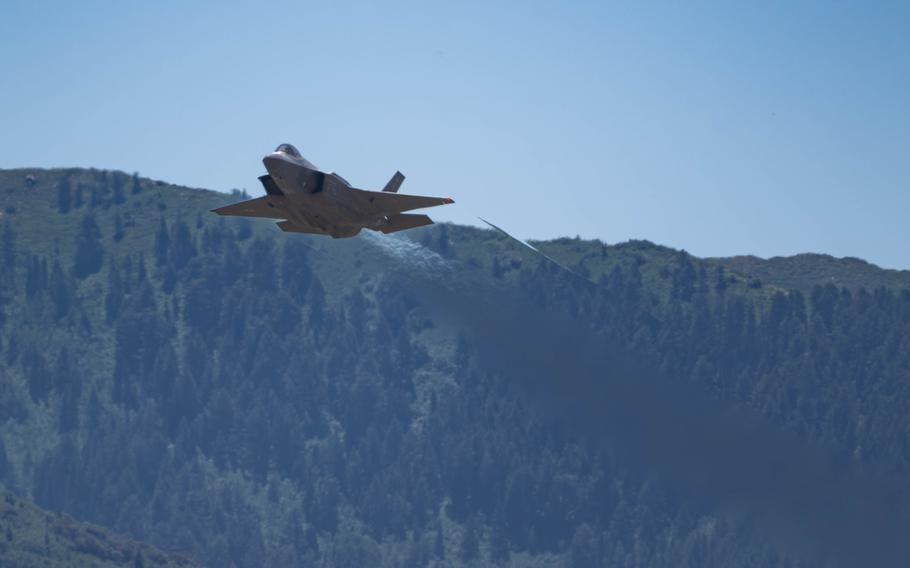
U.S. Air Force Maj. Kristin “BEO” Wolfe, F-35A Lightning II Demonstration Team commander, flies an F-35 assigned to the 421st Fighter Generation Squadron during a practice performance at Hill Air Force Base, Utah, July 12, 2023. Military members and key spouses with the 388th Fighter Wing were invited to observe the practice performance on the flight line and interact with the crew members assigned to the demonstration team. (Kaitlyn Ergish/Air Force)
WASHINGTON – Glitchy software and possibly human error were responsible for the crash of an F-35 fighter jet at an Air Force base in Utah last fall, according to investigators.
Four F-35s were returning to Hill Air Force Base in Ogden, Utah, after a training flight last October when one of them encountered unforeseen turbulence as it prepared to land. A few second later, the pilot ejected and the fighter jet crashed.
The pilot was not seriously injured, but the plane was destroyed.
According to a 39-page Air Force investigation report issued Thursday, the problem was in the F-35A’s avionics software – namely the air data application (ADA) -- which wrongly interpreted flight data when the jet encountered the disruption of air flow, which was created by the plane ahead.
Wake turbulence is a common occurrence in aviation that happens when aerodynamic forces generated by a plane’s energy disrupt the flow of air around it – particularly to the rear. The turbulence can violently shake a trailing aircraft if it gets too close.
In this case, the Air Force said the “rumble” of that turbulence caused the plane’s flight data system to produce faulty information.
“This atmospheric disturbance resulted in erratic inputs to the air data application,” the report said. “This, in turn, caused erroneous outputs from the ADA and resulted in a condition in which the aircraft flight controls did not respond correctly to the actual current conditions.”
“In response, the [pilot] selected full afterburner power … to abort the landing and set up for another landing attempt,” it added. “The cause of the mishap was that the [F-35] departed controlled flight due to [software] errors immediately prior to landing, in which there was no opportunity to recover.”
Investigators also discovered the pilot of the crashed F-35 didn’t follow wake turbulence procedures that were in effect that day – which said all pilots had to keep a minimum separation distance of 9,000 feet between planes. Before ejecting, the pilot involved in the crash had kept a separation between 3,000 and 4,000 feet, investigators said. The report called this failure a “significantly contributing factor.”
“This is the first known occurrence where wake turbulence had this impact on the air data system,” the report added.
The Air Force said it’s unlikely a similar incident will happen in the future.
The crash was only the second over the past decade involving the F-35A, the variant flown by the Air Force. The loss of the destroyed plane – which was part of the 421st Fighter Squadron at Hill Air Force Base -- was worth $166.3 million, the Air Force said.
The Air Force began flying the F-35 in 2016 and has more than 400 of the fighter jets in its fleet. The planes are based at various locations around the world.
ware.doug@stripes.com